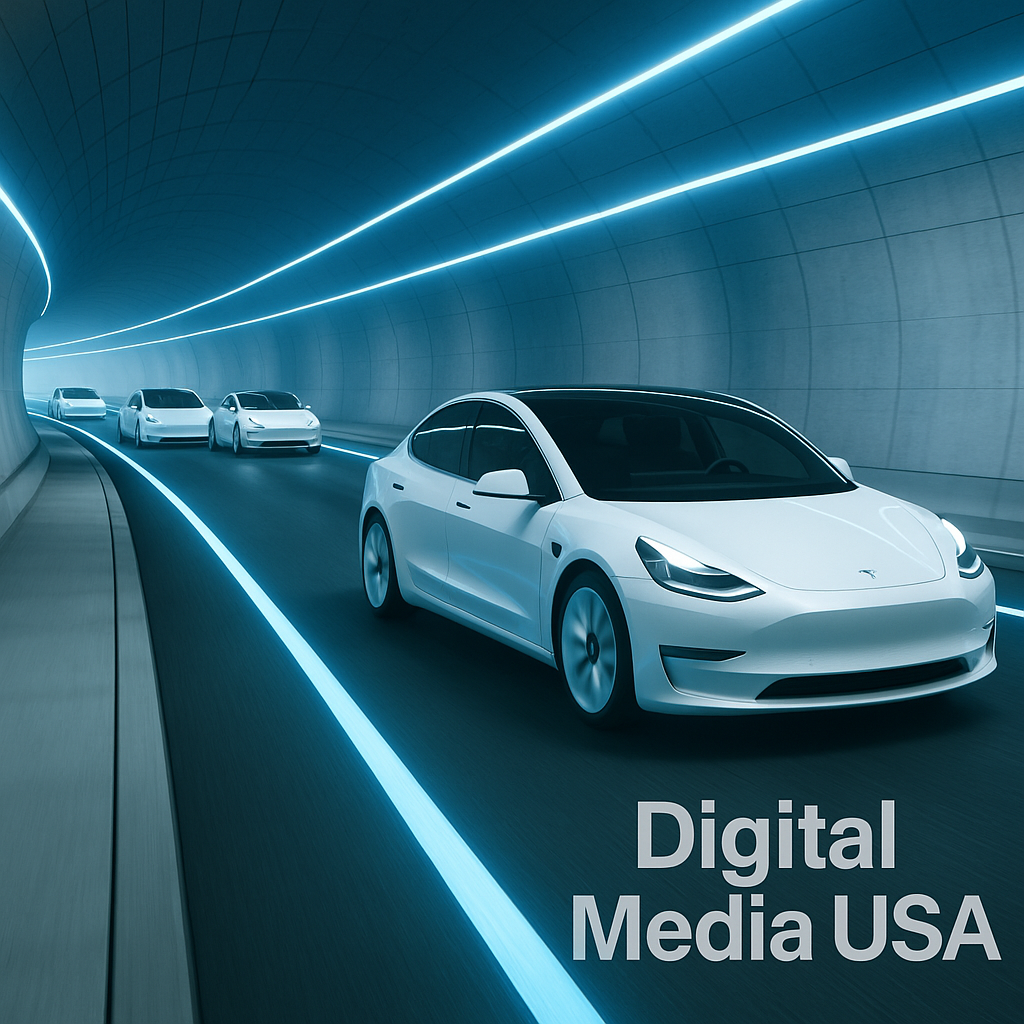
Innovative autonomous electric vehicles glide through a smart, zero-emission tunnel—heralding a world without traffic lights and unrestricted by traditional ventilation constraints.
By Riley Nakamura, Digital Media USA
In an era where cars talk to each other and plug into the grid instead of guzzling gasoline, Tesla’s Full Self-Driving (FSD) Beta isn’t just redefining roadways—it’s paving the way for signal-free intersections and virtually limitless tunnels. By coordinating vehicle movements in real time, connected and automated vehicles (CAVs) could render traffic lights obsolete; and with zero tailpipe emissions from battery-electric vehicles (BEVs), the cumbersome ventilation systems that once capped tunnel length and depth become a thing of the past. Yet as Tesla races to launch its robotaxi fleet and regulators scramble to keep pace, every unreported tow-away crash and algorithmic misstep threatens to derail the promise of seamless, subterranean mobility.
The Automated Traffic Revolution
Tesla’s FSD Beta is slated to debut with a small fleet of robotaxis in Austin as soon as June—10 to 20 Model Ys operating without steering wheels or pedals. Meanwhile, the National Highway Traffic Safety Administration (NHTSA) has opened a safety probe covering as many as 2.4 million Tesla vehicles over collisions when FSD was engaged, including at least one pedestrian fatality under low-visibility conditions. Paradoxically, a recent U.S. Department of Transportation rule change now exempts roughly 12% of Tesla’s Level 2 ADAS tow-away crashes from reporting—about 240 incidents—raising concerns that critical safety data could slip through the cracks.
Lighting the Way to Signal-Free Intersections
Real-Time Vehicle Coordination
Researchers at NC State have demonstrated that CAVs can negotiate right-of-way at intersections using a distributed control framework—eliminating red-yellow-green cycles altogether, reducing travel time, and preserving collision avoidance guarantees.
Optimal Control for Continuous Flows
A seminal optimal-control study modeled a seamless flow of CAVs across adjacent intersections, computing acceleration profiles in advance to ensure cars never stop, even during peak hours.
Bridging the Human-Autonomy Divide
To ease mixed-traffic deployments, NC State also proposes a fourth “white” light phase indicating that autonomous cars are in charge—enabling human drivers to follow their lead and paving the way for full signal removal once CAV penetration hits 30–40%.
Minimal Data, Maximum Impact
University of Michigan researchers found that GPS data from as little as 6% of vehicles can dynamically recalibrate signal timings to smooth traffic—foreshadowing a rapid phase-out of traditional lights as BEVs and CAVs proliferate \.
Subterranean Highways: EV Tunnels Unleashed
Zero Tailpipe Emissions
With BEVs producing no exhaust, tunnel designers can dramatically downsize—or even dispense with—ventilation systems once needed to clear combustion byproducts. Lifecycle-cost analyses show potential savings north of 90% compared to ICE-only tunnels.
Rethinking Tunnel Safety
Studies indicate that EV-only tunnels still require emergency airflow for fire events, but routine ventilation infrastructure can be simplified—slashing both construction and operating expenses and unlocking longer, deeper subterranean corridors .
Maintenance and Visibility Gains
Absence of soot and unburned hydrocarbons stabilizes tunnel airflows, reduces corrosion, and improves visibility—enhancing safety for both automated fleets and human operators during maintenance .
Safety and Scrutiny on Public Roads
While the technological gains are clear, real-world deployments underscore the stakes. In February 2023, Tesla recalled 362,000 FSD Beta vehicles for an over-the-air software patch after NHTSA found the system sometimes violated traffic laws and contributed to crashes . Critics warn that easing crash-reporting requirements under the Trump-era rule diminishes regulators’ ability to spot emergent risks before they become headline-making tragedies
On the Road Ahead
Signal-free intersections and EV-driven tunnels promise a future of nonstop, efficient travel—where roads weave above ground in choreographed harmony and dive underground without the stench of exhaust. Yet the transition hinges on rigorous oversight: every unreported incident chips away at public trust, while every successful pilot inches us closer to an urban landscape defined not by red lights and smoky portals, but by fluid motion and silent, electric progress. As Tesla edges toward robotaxi rollouts and regulators refine new standards, the biggest question may not be whether the technology works, but whether we’re ready to trust our lives to lines of code.




